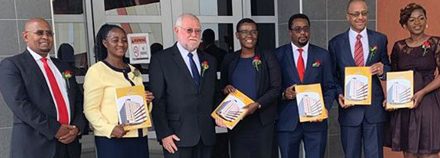
Tega gives his 2 cents
Inflationary pressures seem to be the main cost pushers amongst a company’s operational costs. Debates, that are not unique to Namibia, revolve around a country’s choice of “basket of goods and services”. The cardinal question being whether they give a true representation of a country’s inflation levels.
The Economist caught up with Sanlam Investment Management’s CEO Tega Shiimi ya Shiimi to get his take on the subject matter. They are one of the companies that have taken an interest in Namibia Consumer Price Index composition.
“We have engaged the NSA regarding the composition of the NCPI and as you will appreciate, there are varying views on what the composite basket and weighting relative to the population’s income profile should be. We believe that the recent re-weighting exercise has moved closer to what the reflective position should be although we feel that in certain categories, a larger consideration should be allowed for imported goods and services from South Africa,” explained Shiimi ya Shiimi. In a very fundamental yet practical example he augmented his views by stating, “It is simple. As we import the bulk of our food largely from South Africa, the increase in transport costs will also influence the price of food localy and effectively importing some of SA’s food inflation.”
With a constant trend, some countries have adopted a speculative variable to capture expectations of inflation within their indices. In the case of Namibia Shiimi ya Shiimi explained, “NCPI only captures historic price movements monthly on a year to year basis. Not unless suppliers of goods over inflate their prices but this may make them uncompetitive in the market. It is too subjective for our policy makers to add a speculative component to NCPI calculations although inflation targeting is a consideration in determining where we should be regarding our NCPI.”
Commenting on the past trends the CEO had this to say, “Inflation peaked last year at 7.6% y.o.y in November which may be on the high side as it means N$1 only has the equivalent of 92.4 cents buying power one year later and on the other hand a good inflation rate stimulates the economy as people would rather purchase items now then wait for it to get more expensive. It is a fine balancing act and we believe that the 6% range is a stable inflation rate for a relatively small developing country such as ours.”
Some areas appear to be key to Namibia’s price stability. Reverting back to the composition of the basket, Shiimi ya Shiimi drew this nexus, “As Transport, food and housing make up 65% of the basket, increase in electricity and fuel costs will have a direct and indirect impact on these items as many industries are reliant on electricity and fuel. Unless we see a downward movement in these sectors there will be little short term scope for relief. However recent reduction in the oil price may give consumers relief, albeit on a small scale – that needs to be set off against the imminent hikes in electricity hikes.”
In conclusion, the CEO referenced the income disparity within the country and the impact it has on analysing inflation, “Individuals income patterns determine individual “baskets”. The consumption patterns of a household earning N$5000 per month will fundamentally look very different from a household earning N$50,000 per month – one also needs to consider rural versus urban compositions.”











































